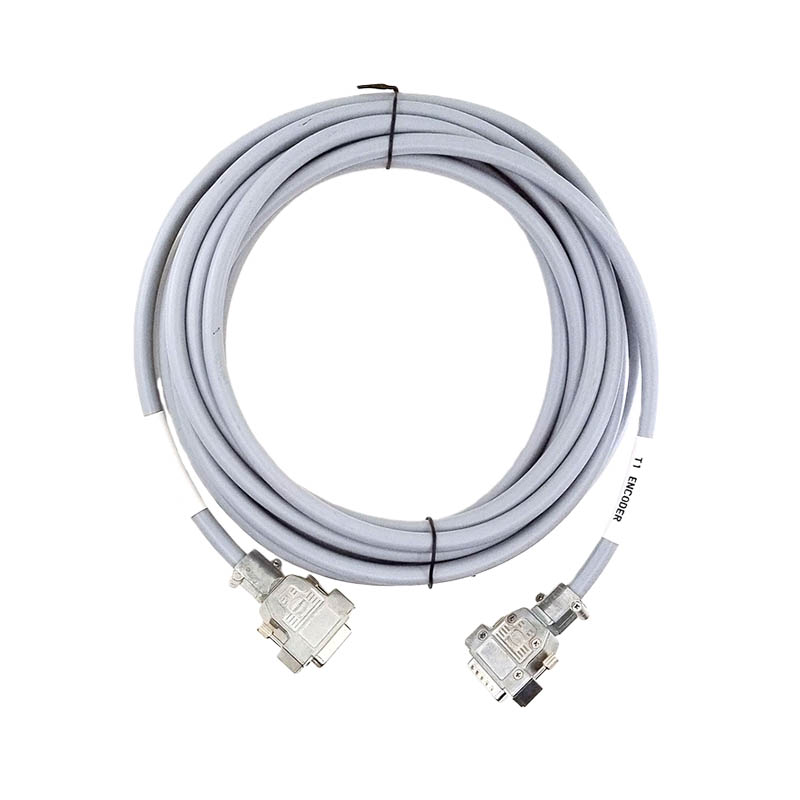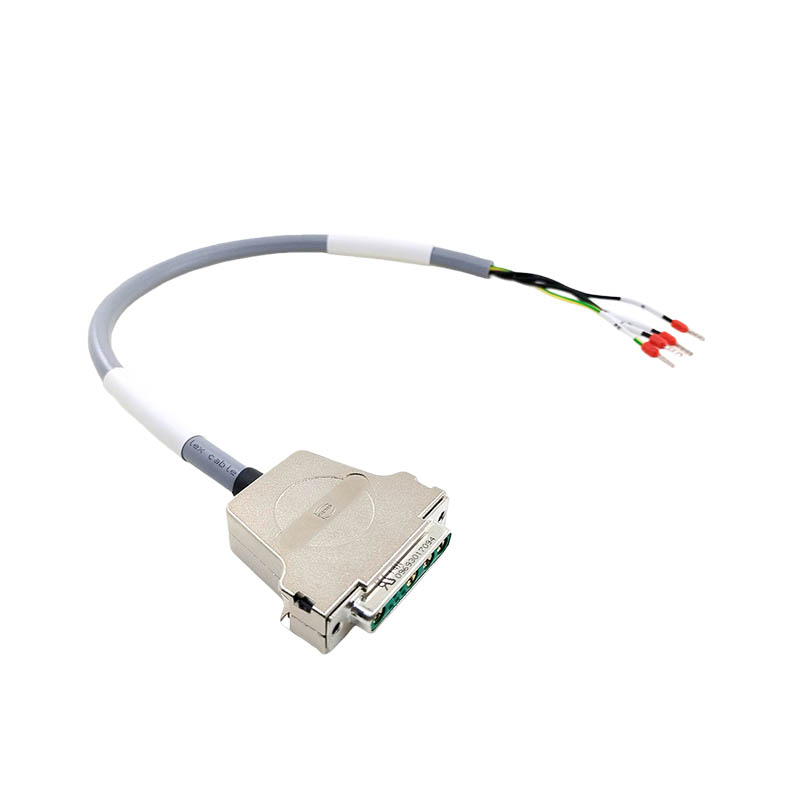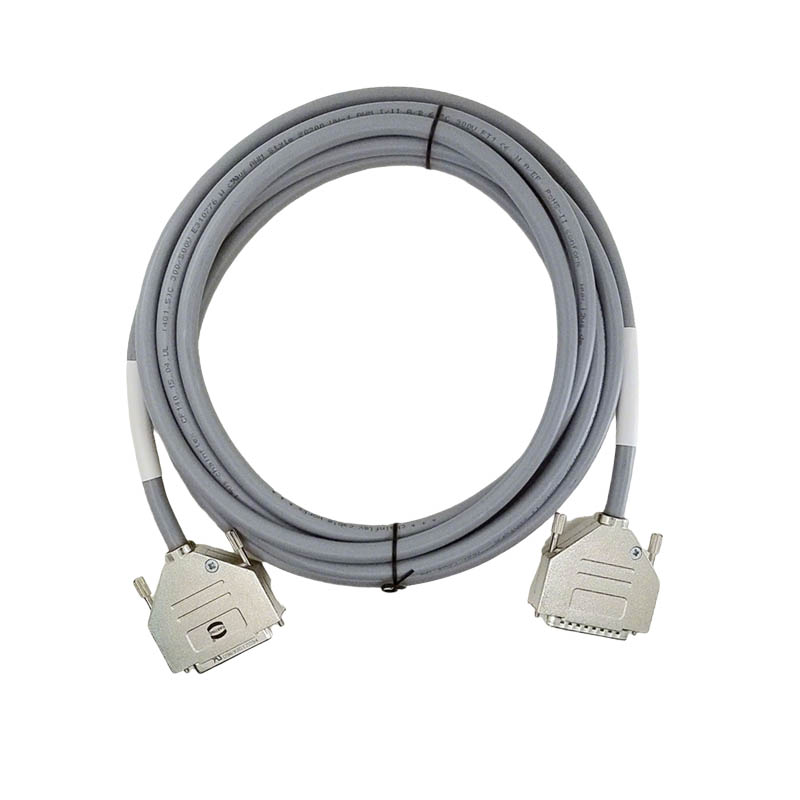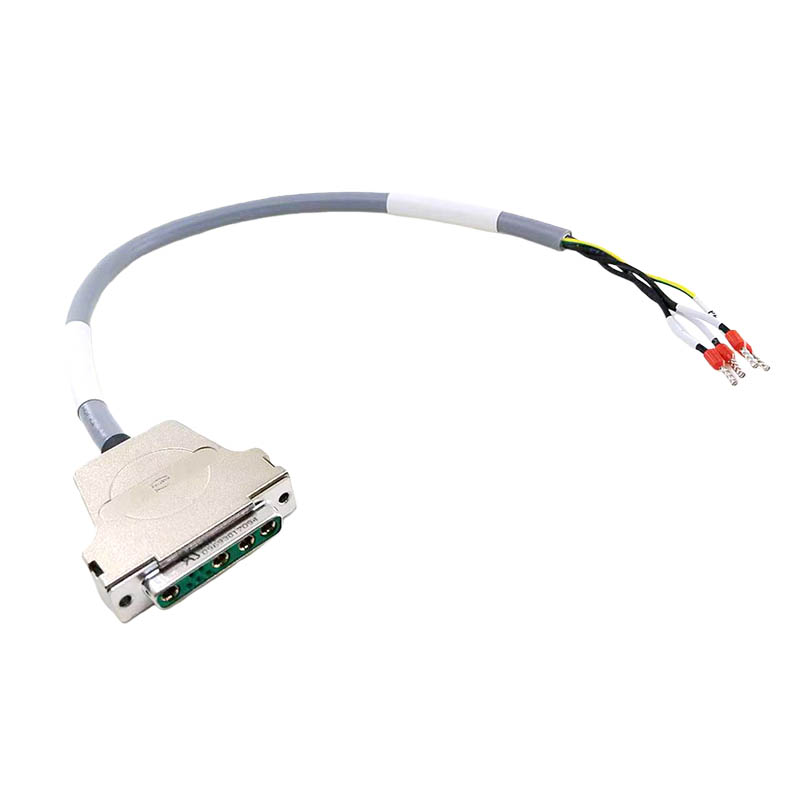How does the IX industrial CAT7 ethernet network cable ensure connection reliability in high-frequency vibration environments?
Release Time : 2025-07-30
In industrial environments, particularly in manufacturing, mining, and heavy machinery operations, equipment is often exposed to high-frequency vibration. This vibration originates not only from the operation of the machinery itself but also from external factors such as transport vehicles or wind turbines. For industrial Ethernet systems that rely on stable network communications, this high-frequency vibration can cause cable connections to loosen, fray, or even break, compromising the reliability and stability of data transmission. Therefore, ensuring the connection reliability of the IX industrial CAT7 ethernet network cable under these extreme conditions is a critical issue.
Vibration Resistance in Cable Design
To address the challenges posed by high-frequency vibration, modern IX industrial CAT7 ethernet network cables employ a variety of innovative designs and technologies to enhance their vibration resistance. First, manufacturers favor high-strength, wear-resistant, and elastic materials, such as polyurethane (PUR) jackets. This material not only resists chemical corrosion and mechanical damage but also exhibits excellent flexibility and elasticity, maintaining structural integrity under repeated bending and vibration.
Secondly, the conductor arrangement and insulation design within the cable have been carefully optimized. For example, the twisted-pair structure effectively reduces electromagnetic interference (EMI) while also improving the cable's overall mechanical strength. Furthermore, some high-end cables incorporate reinforcing ribs or armor to further enhance the cable's resistance to external shock and vibration. These design improvements ensure that the cable maintains excellent electrical performance and physical integrity even in extreme vibration environments.
Connector Selection and Installation
In addition to the cable's design, connector selection and installation are also crucial for ensuring connection reliability. In high-frequency vibration environments, traditional pluggable connectors are prone to loosening due to vibration, resulting in poor contact or signal loss. Specifically designed vibration-resistant connectors have emerged to address this issue. These connectors typically feature locking mechanisms, such as thread locks or quick-lock latches, to ensure a secure connection and resist loosening.
Proper installation techniques are also crucial. During installation, strictly follow the manufacturer's instructions, ensuring that the specified torque value is met at each connection point and avoiding overtightening that can cause damage. For particularly sensitive applications, consider using anti-vibration washers or shock-absorbing mounts to further minimize the impact of vibration on the connection points.
Environmental Adaptability and Protective Measures
In practical applications, IX industrial CAT7 ethernet network cables must withstand not only mechanical vibration but also a variety of harsh environmental conditions, including high and low temperatures, humidity, and chemical attack. To enhance the cable's overall environmental adaptability, many manufacturers have incorporated multiple protective measures into their product designs. For example, sealing technology with waterproof and dustproof ratings reaching IP67 or higher ensures the cables can operate stably and long-term in outdoor or humid environments.
Additionally, to meet the needs of specific industries, some cables feature special properties such as oil, acid, and alkali resistance, enabling normal use in specialized environments such as chemical plants and food processing plants. Through these comprehensive protective measures, IX industrial CAT7 ethernet network cables not only withstand high-frequency vibration but also cope with other complex environmental challenges, ensuring the continued stable operation of the entire network system.
Monitoring and Maintenance Strategy
Even with the most advanced design and protective measures, regular monitoring and maintenance remain essential to ensure the reliability of IX industrial CAT7 ethernet network cable connections. Intelligent monitoring systems can provide real-time monitoring of the cable's operating status, including key parameters such as temperature, humidity, and vibration frequency. Once an abnormality is detected, the system promptly issues an alarm, alerting technicians to conduct inspection and repairs, preventing minor issues from escalating into major failures.
In addition, establishing a comprehensive maintenance plan is crucial. Based on the specific application scenarios and frequency of use of the cable, appropriate inspection cycles and maintenance procedures should be developed, such as regular cleaning and replacement of aging components. Preventive maintenance not only extends the cable's service life but also significantly reduces the risk of unplanned downtime, ensuring continuous and efficient production.
In summary, ensuring connection reliability for IX industrial CAT7 Ethernet network cables in high-frequency vibration environments is a multifaceted issue, encompassing everything from material selection and design optimization to installation details and ongoing maintenance. By adopting advanced technologies and scientific management methods, the adverse effects of vibration can be effectively mitigated, providing a solid foundation for industrial automation and intelligent manufacturing.
Vibration Resistance in Cable Design
To address the challenges posed by high-frequency vibration, modern IX industrial CAT7 ethernet network cables employ a variety of innovative designs and technologies to enhance their vibration resistance. First, manufacturers favor high-strength, wear-resistant, and elastic materials, such as polyurethane (PUR) jackets. This material not only resists chemical corrosion and mechanical damage but also exhibits excellent flexibility and elasticity, maintaining structural integrity under repeated bending and vibration.
Secondly, the conductor arrangement and insulation design within the cable have been carefully optimized. For example, the twisted-pair structure effectively reduces electromagnetic interference (EMI) while also improving the cable's overall mechanical strength. Furthermore, some high-end cables incorporate reinforcing ribs or armor to further enhance the cable's resistance to external shock and vibration. These design improvements ensure that the cable maintains excellent electrical performance and physical integrity even in extreme vibration environments.
Connector Selection and Installation
In addition to the cable's design, connector selection and installation are also crucial for ensuring connection reliability. In high-frequency vibration environments, traditional pluggable connectors are prone to loosening due to vibration, resulting in poor contact or signal loss. Specifically designed vibration-resistant connectors have emerged to address this issue. These connectors typically feature locking mechanisms, such as thread locks or quick-lock latches, to ensure a secure connection and resist loosening.
Proper installation techniques are also crucial. During installation, strictly follow the manufacturer's instructions, ensuring that the specified torque value is met at each connection point and avoiding overtightening that can cause damage. For particularly sensitive applications, consider using anti-vibration washers or shock-absorbing mounts to further minimize the impact of vibration on the connection points.
Environmental Adaptability and Protective Measures
In practical applications, IX industrial CAT7 ethernet network cables must withstand not only mechanical vibration but also a variety of harsh environmental conditions, including high and low temperatures, humidity, and chemical attack. To enhance the cable's overall environmental adaptability, many manufacturers have incorporated multiple protective measures into their product designs. For example, sealing technology with waterproof and dustproof ratings reaching IP67 or higher ensures the cables can operate stably and long-term in outdoor or humid environments.
Additionally, to meet the needs of specific industries, some cables feature special properties such as oil, acid, and alkali resistance, enabling normal use in specialized environments such as chemical plants and food processing plants. Through these comprehensive protective measures, IX industrial CAT7 ethernet network cables not only withstand high-frequency vibration but also cope with other complex environmental challenges, ensuring the continued stable operation of the entire network system.
Monitoring and Maintenance Strategy
Even with the most advanced design and protective measures, regular monitoring and maintenance remain essential to ensure the reliability of IX industrial CAT7 ethernet network cable connections. Intelligent monitoring systems can provide real-time monitoring of the cable's operating status, including key parameters such as temperature, humidity, and vibration frequency. Once an abnormality is detected, the system promptly issues an alarm, alerting technicians to conduct inspection and repairs, preventing minor issues from escalating into major failures.
In addition, establishing a comprehensive maintenance plan is crucial. Based on the specific application scenarios and frequency of use of the cable, appropriate inspection cycles and maintenance procedures should be developed, such as regular cleaning and replacement of aging components. Preventive maintenance not only extends the cable's service life but also significantly reduces the risk of unplanned downtime, ensuring continuous and efficient production.
In summary, ensuring connection reliability for IX industrial CAT7 Ethernet network cables in high-frequency vibration environments is a multifaceted issue, encompassing everything from material selection and design optimization to installation details and ongoing maintenance. By adopting advanced technologies and scientific management methods, the adverse effects of vibration can be effectively mitigated, providing a solid foundation for industrial automation and intelligent manufacturing.







